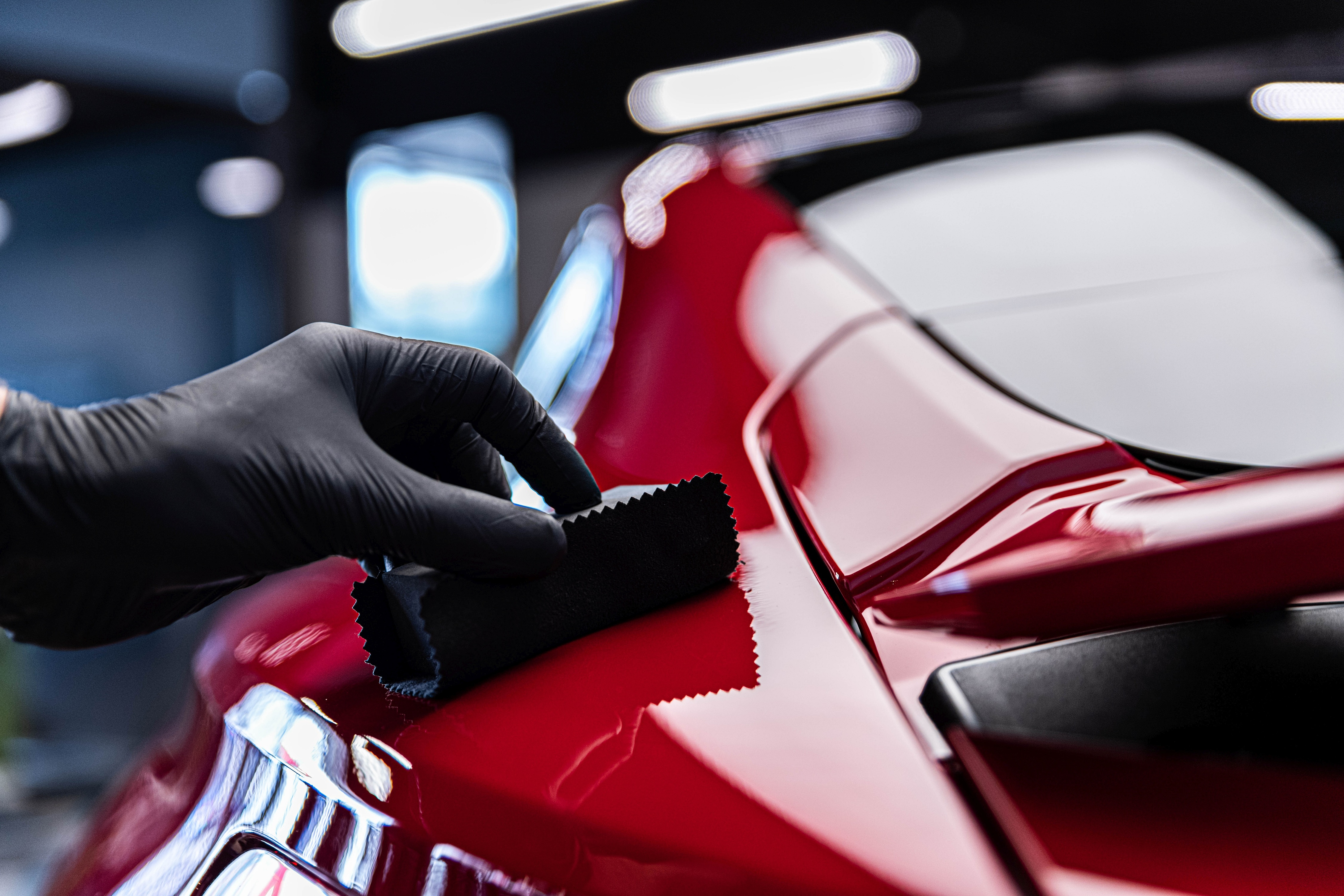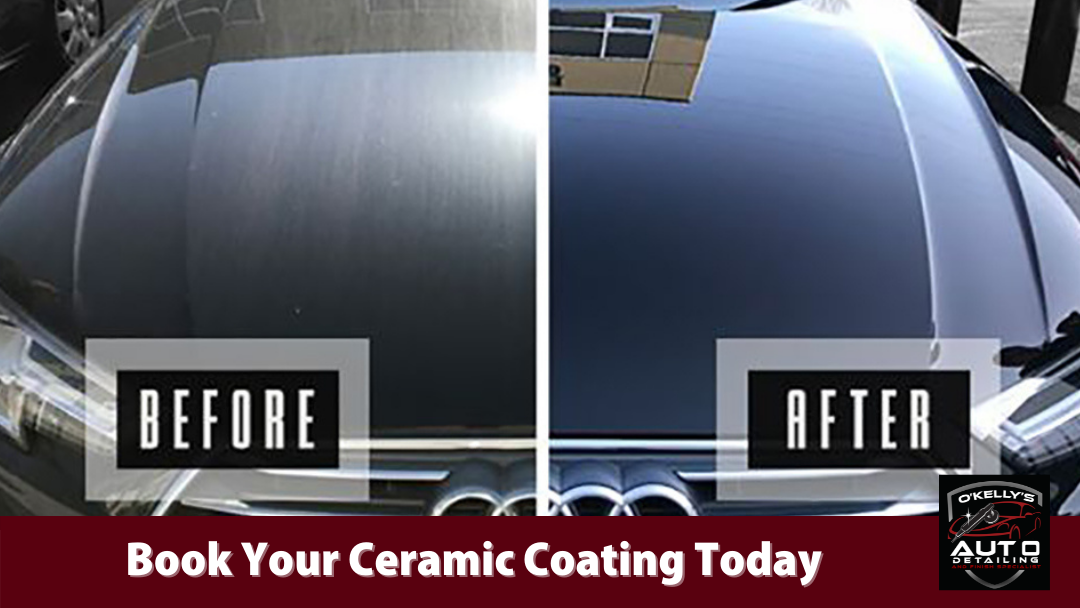Final Touch Auto Works Ceramic Coatings: Gloss, Protection, and Simplicity in One
Final Touch Auto Works Ceramic Coatings: Gloss, Protection, and Simplicity in One
Blog Article
The Ultimate Guide to Ceramic Coatings: Enhancing Your Automobile's End up and Durability
Ceramic layers might be the service you've been looking for if you're looking to elevate your automobile's look and defense. These innovative coverings bond with your vehicle's paint, producing a durable barrier against environmental damage. How do they stack up versus conventional wax? Comprehending the benefits and application process can make a considerable difference in your car care routine. Let's discover what makes ceramic coatings a worthwhile investment for your car.
What Are Ceramic Coatings?
Ceramic coverings are advanced safety layers that boost your auto's outside. They're made from a liquid polymer that chemically bonds with your automobile's paint, producing a resilient shield. Unlike traditional wax or sealers, which use off with time, ceramic coatings provide durable security against environmental contaminants like UV rays, dirt, and chemicals.When you use a ceramic covering, you're purchasing an obstacle that repels water, making it simpler to cleanse your vehicle and maintaining it looking more recent for longer. This innovation assists preserve the honesty of your paint, minimizing the risk of scrapes and oxidation.Ceramic finishes been available in different formulations, each designed to cater to different requirements and choices. You can choose a DIY set or decide for specialist application, depending upon your convenience degree and spending plan. Overall, ceramic coatings stand for an advanced solution for preserving your vehicle's visual allure and durability.
Advantages of Ceramic Coatings
When you buy a ceramic covering, you expose a variety of benefits that surpass mere looks. To start with, it offers phenomenal protection versus ecological impurities like dirt, bird droppings, and UV rays, maintaining your car's paint looking new much longer. You'll see that maintenance ends up being easier, as the hydrophobic residential or commercial properties trigger water and crud to slide off effortlessly. This indicates less time spent washing and outlining your vehicle.Additionally, ceramic layers can enhance the gloss of your vehicle's surface, providing it that display room sparkle. They also provide resistance to scratches and swirl marks, which assists keep your automobile's resale value. With a ceramic finish, you're not just safeguarding your investment; you're likewise improving its general appearance and long life. Ultimately, this advanced innovation warranties your car attracts attention while taking pleasure in long-lasting benefits that traditional waxes just can't match.
The Application Refine: How to Use Ceramic Coatings
Using a ceramic finish involves a number of key steps to guarantee suitable outcomes. Thoroughly clean your cars and truck to eliminate any type of dirt, crud, or pollutants. This ensures the surface is all set and clean for the finishing. Next off, sanitize the paint making use of a clay bar to remove embedded particles. Later, inspect the paint for imperfections and brighten it to attain a smooth surface.Once your automobile's surface is prepped, apply the ceramic covering in small areas. Use an applicator pad to spread out the finish evenly, complying with the producer's instructions. Permit the finishing to heal for the recommended time, usually between one to 2 hours, depending on the product.Finally, avoid cleaning your auto for a minimum of a week to let the layer bond appropriately. Following these steps will certainly assist you attain a resilient, high-gloss finish that secures your car for several years to find.

Comparing Ceramic Coatings to Typical Wax
After ensuring your cars and truck's surface is flawlessly prepped with a ceramic coating, it's time to consider just how this modern service piles up against standard wax. Ceramic coatings offer a durable layer of defense that lasts for years, while wax normally offers just a few weeks of sparkle. You'll notice that ceramic coverings bond with your paint, producing a hydrophobic surface that drives away water and dust, making maintenance easier.In contrast, conventional wax rests on top of the paint and calls for frequent reapplication. With ceramic finishings, you obtain premium scrape resistance and UV protection, helping to stop fading and oxidation. While the preliminary investment for a ceramic finishing is greater, the long-lasting advantages commonly outweigh the costs. So, if you're trying to find longevity and boosted gloss, ceramic layers are a smart choice over standard wax.
Upkeep Tips for Your Ceramic Layered Automobile
To maintain your ceramic-coated car looking excellent, routine maintenance is important. Start with a gentle clean making use of a pH-balanced hair shampoo; prevent harsh detergents that can degrade the coating. Use a microfiber wash glove to avoid scratches and constantly wash extensively to get rid of any type of soap residue.After cleaning, dry your auto with a soft microfiber towel to prevent water spots. Take into consideration using a ceramic maintenance spray every few months to boost the finish's hydrophobic residential or commercial properties and add an added layer of protection.It's also important to stay clear of automatic vehicle cleans with rough brushes, as they can damage the covering. Instead, select hand washes or touchless clean choices. Additionally, regularly evaluate your car for contaminants like tree sap or bird droppings and resolve them promptly to protect against etching. Complying with these pointers will aid visit maintain the luster and sturdiness of your ceramic-coated vehicle for several years to come.
Usual Misconceptions About Ceramic Coatings
Regardless of the outstanding advantages of ceramic finishings, numerous myths can develop confusion for cars and truck proprietors. One typical misconception is that ceramic finishes get rid of the requirement for maintenance. While they do offer improved defense, routine cleaning and treatment are still important to preserve that high-gloss finish.Another misconception is that these layers are scratch-proof. While they offer a solid layer of protection versus minor scratches, they can't stand up to severe impacts or unpleasant materials.Many also believe that ceramic finishings will certainly make their cars immune to all pollutants. In reality, they push back dust and water but won't avoid problems like bird droppings or tree sap from triggering damage if left unattended.Lastly, some assume that using ceramic layers is a do it yourself job anyone can handle, however attaining a flawless application frequently requires professional experience to assure peak results.
Choosing the Right Ceramic Covering for Your Vehicle
How do you pick the ideal ceramic layer for your cars and truck? Begin by thinking about the level of defense you need. If your auto encounters extreme weather or frequent roadway trips, opt for a premium covering that provides superior longevity and resistance to scratches, UV rays, and chemical stains.Next, consider the application method. Some finishings require professional installation, while others are DIY-friendly. If you're experienced, a do it yourself product may save you money, however, for the finest results, an expert can guarantee correct application.Don' t forget to examine the durability of the finishing. Some last a few years, while others can shield for a years or more. Ultimately, check out evaluations and reviews to gauge customer satisfaction. By evaluating these variables, you'll locate a ceramic covering that not just improves your cars and truck's appearance yet also offers resilient protection.
Regularly Asked Concerns
The Length Of Time Do Ceramic Coatings Last generally?
Ceramic coatings normally last anywhere from two to 5 years, relying on variables like application, upkeep, and ecological conditions. You'll wish to adhere to correct treatment regimens to maximize their durability and efficiency.
Can Porcelain Coatings Be Applied Over Paint Scratches?
You can't use ceramic finishes over paint scrapes properly. It's best to repair any scratches first, making click for source certain a smooth surface area - Final Touch Auto Works Ceramic Coatings. In this manner, the covering bonds correctly and offers perfect security for your automobile's surface
Are Ceramic Coatings Safe for All Cars And Truck Surface areas?
Ceramic layers are generally risk-free for a lot of automobile surfaces, including paint, glass, and wheels. Nevertheless, it is vital to inspect certain product standards, as some coverings may not appropriate for particular products or coatings.

Will Porcelain Coatings Protect Against UV Damage?

Can I Do Touch-Ups on Ceramic Layered Surfaces?
You can do touch-ups on ceramic covered surfaces, however it's critical to utilize suitable products. Verify the location is tidy and follow appropriate application strategies to keep the covering's stability and performance. Unlike traditional wax or sealers, which wear off over time, ceramic coverings provide resilient defense versus environmental contaminants like UV rays, dust, and chemicals.When you use a ceramic finish, you're investing in a barrier that fends off water, making it easier to clean your car and keeping it looking newer for longer (Final Touch Auto Works Ceramic Coatings). Afterward, check the paint for blemishes and polish original site it to achieve a smooth surface.Once your vehicle's surface is prepped, use the ceramic covering in tiny areas. Enable the layer to cure for the suggested time, typically in between one to two hours, depending on the product.Finally, stay clear of cleaning your cars and truck for at least a week to let the finishing bond appropriately. Consider using a ceramic upkeep spray every few months to enhance the layer's hydrophobic buildings and include an additional layer of protection.It's likewise smart to avoid automated vehicle cleans with unpleasant brushes, as they can harm the layer. Ceramic layers are generally risk-free for a lot of automobile surface areas, including paint, glass, and wheels
Report this page